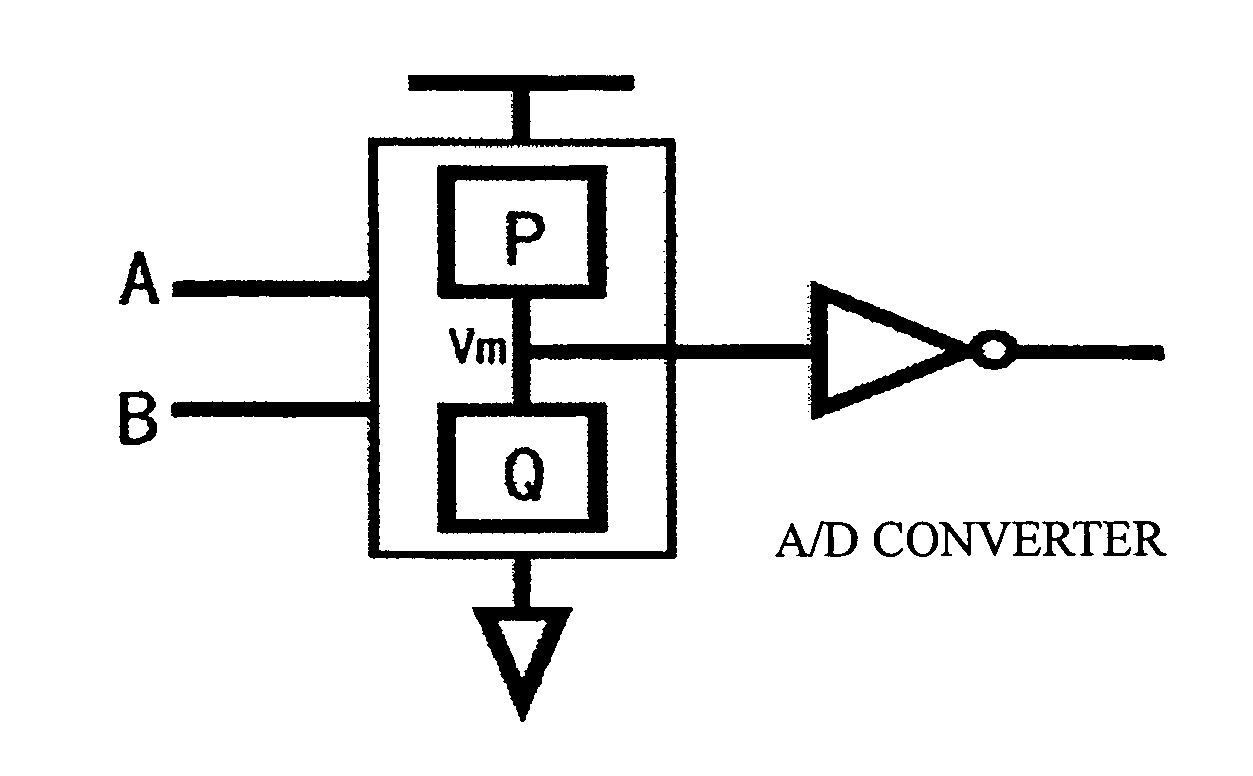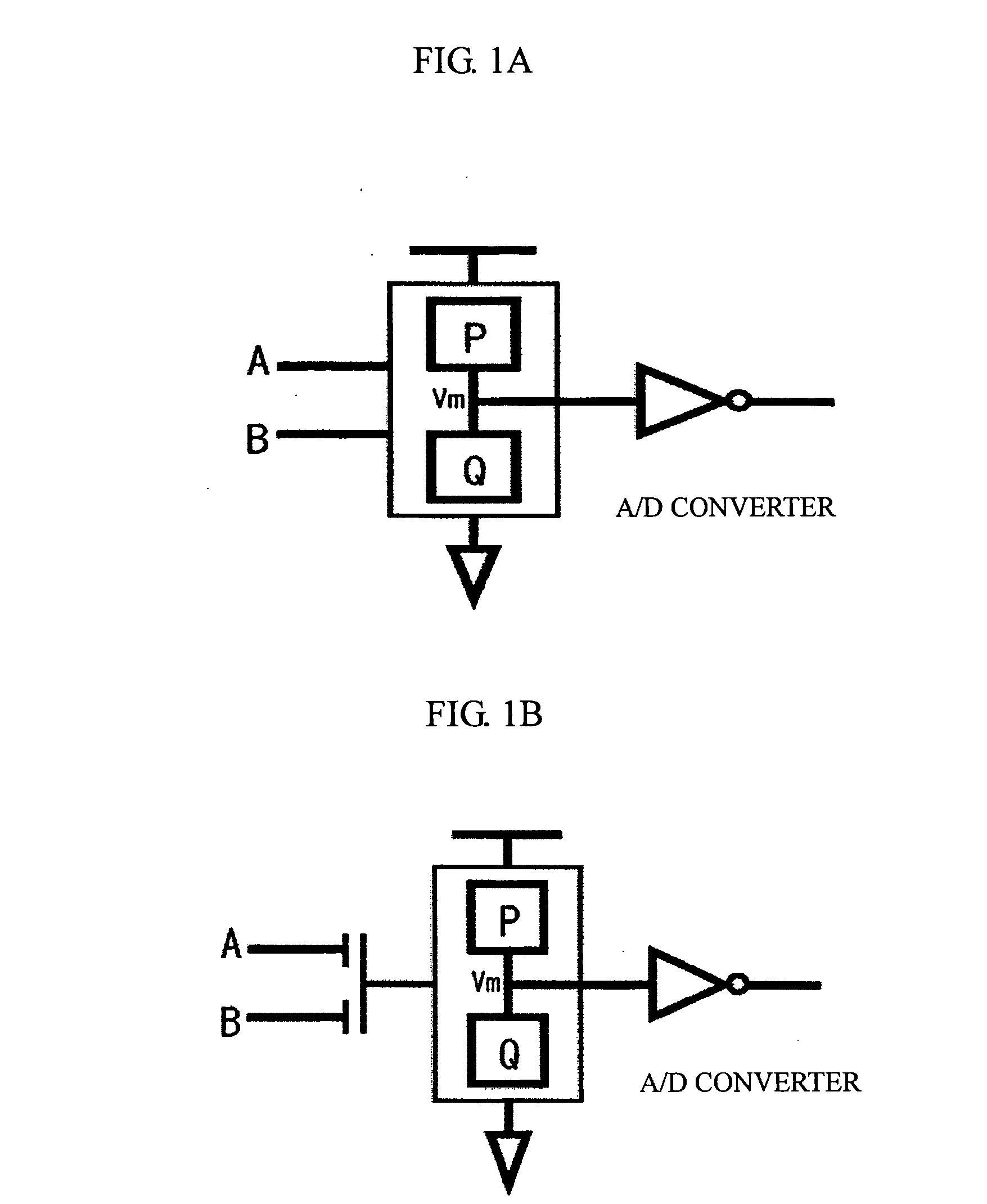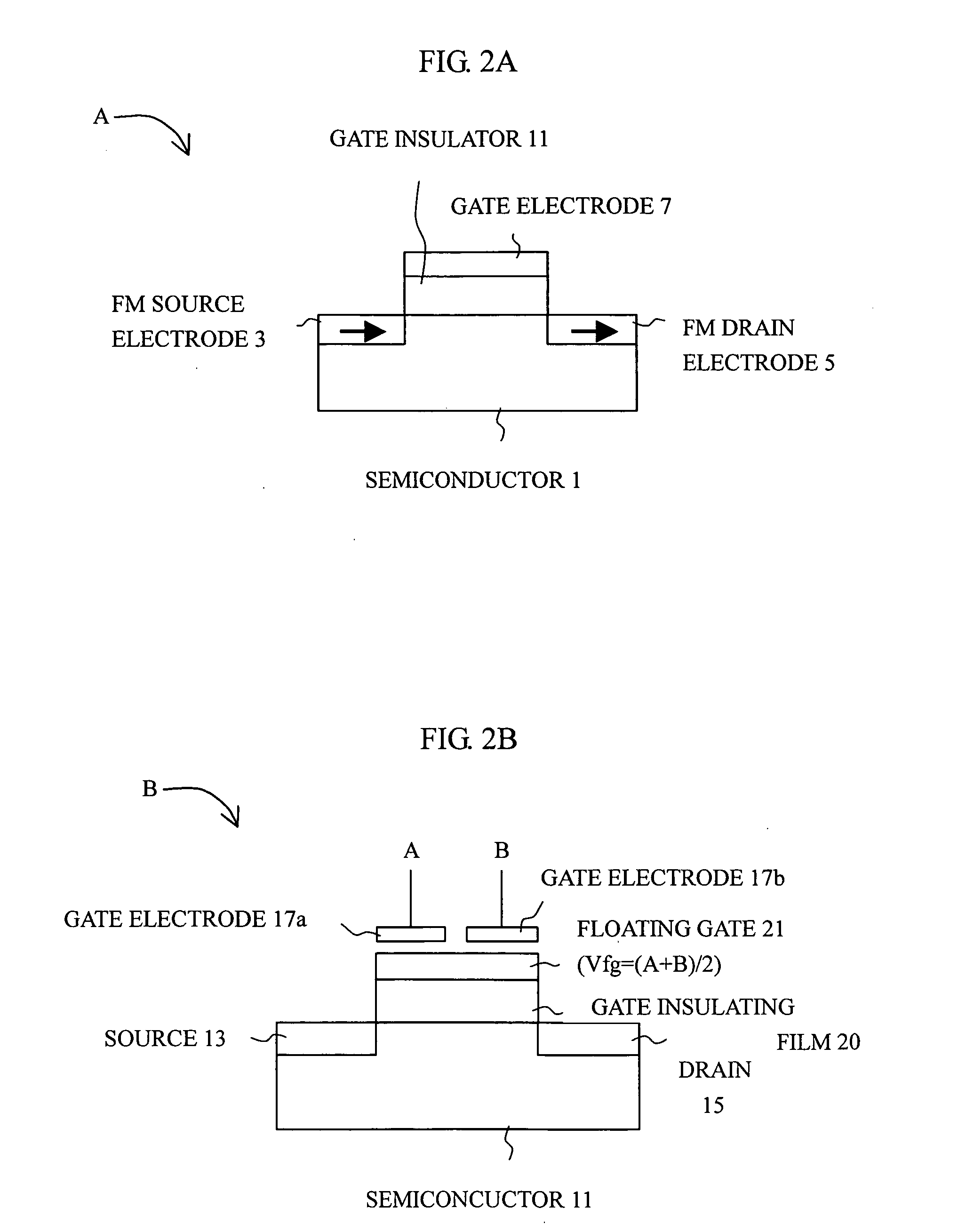Reconfigurable logical circuit using transistor having spi-dependent transmission characteristics
- Summary
- Abstract
- Description
- Claims
- Application Information
AI Technical Summary
Benefits of technology
Problems solved by technology
Method used
Image
Examples
first embodiment
[0122] Next, a reconfigurable logic circuit in accordance with the present invention is described in conjunction with the accompanying drawings. In the logic circuit in accordance with this embodiment, the driver or the active load of an E / D inverter circuit formed with an enhancement MOSFET and a depletion MOSFET is replaced with a spin MOSFET. To replace the driver, an enhancement spin MOSFET should be employed. To replace the active load, a depletion spin MOSFET should be employed. The input νMOS structure is used for the driver. As for the inverter of the output stage, a CMOS inverter is most preferred in terms of performance, but it is possible to employ an inverter of another type, such as an E / D inverter.
[0123] The load curve in the E / E configuration varies according to the voltage generated in the driver. With the E / D configuration, on the other hand, the load curve with the active load is saturated. Accordingly, a wider logic margin can be allowed.
[0124] 1) AND / OR Circuit ...
second embodiment
[0134] Next, a reconfigurable logic circuit in accordance with the present invention is described in conjunction with the accompanying drawings. A logic circuit in accordance with this embodiment can be formed by using a spin MOSFET for either the n-channel MOSFET or the p-channel MOSFET in a CMOS inverter, or using spin MOSFETs for both the n-channel MOSFET and the p-channel MOSFET. The νMOS structure used for the input is formed with a floating gate shared by the n-channel device and the p-channel device. The inverter of the output stage is a conventional inverter of the CMOS configuration.
[0135] In accordance with this embodiment, the operating curve is saturated as in the E / D configuration, and accordingly, the mean logic margin can be made wider. Also, it is effective for low power consumption.
[0136] 1) Threshold Value Variable Inverter
[0137]FIG. 16A is a circuit diagram of an inverter having a variable logic threshold value. In this circuit, the n-channel MOSFET and the p-ch...
PUM
 Login to View More
Login to View More Abstract
Description
Claims
Application Information
 Login to View More
Login to View More - R&D
- Intellectual Property
- Life Sciences
- Materials
- Tech Scout
- Unparalleled Data Quality
- Higher Quality Content
- 60% Fewer Hallucinations
Browse by: Latest US Patents, China's latest patents, Technical Efficacy Thesaurus, Application Domain, Technology Topic, Popular Technical Reports.
© 2025 PatSnap. All rights reserved.Legal|Privacy policy|Modern Slavery Act Transparency Statement|Sitemap|About US| Contact US: help@patsnap.com



